TL;DR
lines_labels = [ax.get_legend_handles_labels() for ax in fig.axes]
lines, labels = [sum(lol, []) for lol in zip(*lines_labels)]
fig.legend(lines, labels)
I have noticed that none of the other answers displays an image with a single legend referencing many curves in different subplots, so I have to show you one... to make you curious...

Now, if I've teased you enough, here it is the code
from numpy import linspace
import matplotlib.pyplot as plt
# each Axes has a brand new prop_cycle, so to have differently
# colored curves in different Axes, we need our own prop_cycle
# Note: we CALL the axes.prop_cycle to get an itertoools.cycle
color_cycle = plt.rcParams['axes.prop_cycle']()
# I need some curves to plot
x = linspace(0, 1, 51)
functs = [x*(1-x), x**2*(1-x),
0.25-x*(1-x), 0.25-x**2*(1-x)]
labels = ['$x-x²$', '$x²-x³$',
'$\\frac{1}{4} - (x-x²)$', '$\\frac{1}{4} - (x²-x³)$']
# the plot,
fig, (a1,a2) = plt.subplots(2)
for ax, f, l, cc in zip((a1,a1,a2,a2), functs, labels, color_cycle):
ax.plot(x, f, label=l, **cc)
ax.set_aspect(2) # superfluos, but nice
# So far, nothing special except the managed prop_cycle. Now the trick:
lines_labels = [ax.get_legend_handles_labels() for ax in fig.axes]
lines, labels = [sum(lol, []) for lol in zip(*lines_labels)]
# Finally, the legend (that maybe you'll customize differently)
fig.legend(lines, labels, loc='upper center', ncol=4)
plt.show()
If you want to stick with the official Matplotlib API, this is
perfect, otherwise see note no.1 below (there is a private
method...)
The two lines
lines_labels = [ax.get_legend_handles_labels() for ax in fig.axes]
lines, labels = [sum(lol, []) for lol in zip(*lines_labels)]
deserve an explanation, see note 2 below.
I tried the method proposed by the most up-voted and accepted answer,
# fig.legend(lines, labels, loc='upper center', ncol=4)
fig.legend(*a2.get_legend_handles_labels(),
loc='upper center', ncol=4)
and this is what I've got

Note 1
If you don't mind using a private method of the matplotlib.legend module ... it's really much much much easier
from matplotlib.legend import _get_legend_handles_labels
...
fig.legend(*_get_legend_handles_and_labels(fig.axes), ...)
Note 2
I have encapsulated the two tricky lines in a function, just four lines of code, but heavily commented
def fig_legend(fig, **kwdargs):
# Generate a sequence of tuples, each contains
# - a list of handles (lohand) and
# - a list of labels (lolbl)
tuples_lohand_lolbl = (ax.get_legend_handles_labels() for ax in fig.axes)
# E.g., a figure with two axes, ax0 with two curves, ax1 with one curve
# yields: ([ax0h0, ax0h1], [ax0l0, ax0l1]) and ([ax1h0], [ax1l0])
# The legend needs a list of handles and a list of labels,
# so our first step is to transpose our data,
# generating two tuples of lists of homogeneous stuff(tolohs), i.e.,
# we yield ([ax0h0, ax0h1], [ax1h0]) and ([ax0l0, ax0l1], [ax1l0])
tolohs = zip(*tuples_lohand_lolbl)
# Finally, we need to concatenate the individual lists in the two
# lists of lists: [ax0h0, ax0h1, ax1h0] and [ax0l0, ax0l1, ax1l0]
# a possible solution is to sum the sublists - we use unpacking
handles, labels = (sum(list_of_lists, []) for list_of_lists in tolohs)
# Call fig.legend with the keyword arguments, return the legend object
return fig.legend(handles, labels, **kwdargs)
I recognize that sum(list_of_lists, []) is a really inefficient method to flatten a list of lists, but ① I love its compactness, ② usually is a few curves in a few subplots and ③ Matplotlib and efficiency? ;-)



